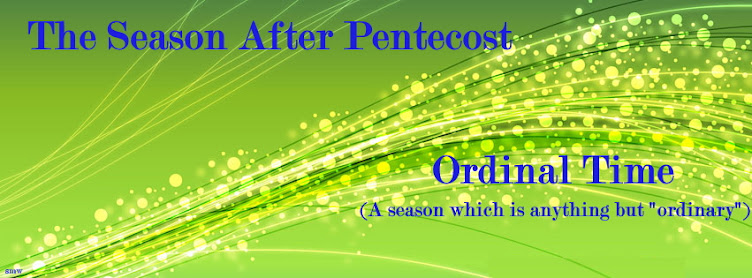The History of the Advent Wreath
FR. WILLIAM SAUNDERSA Baptist friend asked me about the Advent wreath — its history, meaning, etc.. I think I gave her a pretty good answer. Perhaps you could provide a little more information...
The Advent wreath is part of our long-standing Catholic tradition. However, the actual origins are uncertain. There is evidence of pre-Christian Germanic peoples using wreathes with lit candles during the cold and dark December days as a sign of hope in the future warm and extended-sunlight days of Spring. In Scandinavia during Winter, lighted candles were placed around a wheel, and prayers were offered to the god of light to turn “the wheel of the earth” back toward the sun to lengthen the days and restore warmth. By the Middle Ages, the Christians adapted this tradition and used Advent wreathes as part of their spiritual preparation for Christmas. After all, Christ is “the Light that came into the world” to dispel the darkness of sin and to radiate the truth and love of God (cf. John 3:19-21). By 1600, both Catholics and Lutherans had more formal practices surrounding the Advent wreath.The symbolism of the Advent wreath is beautiful. The wreath is made of various evergreens, signifying continuous life. Even these evergreens have a traditional meaning which can be adapted to our faith: The laurel signifies victory over persecution and suffering; pine, holly, and yew, immortality; and cedar, strength and healing. Holly also has a special Christian symbolism: The prickly leaves remind us of the crown of thorns, and one English legend tells of how the cross was made of holly. The circle of the wreath, which has no beginning or end, symbolizes the eternity of God, the immortality of the soul, and the everlasting life found in Christ. Any pine cones, nuts, or seedpods used to decorate the wreath also symbolize life and resurrection. All together, the wreath of evergreens depicts the immortality of our soul and the new, everlasting life promised to us through Christ, the eternal Word of the Father, who entered our world becoming true man and who was victorious over sin and death through His own passion, death, and resurrection.
The four candles represent the four weeks of Advent. A tradition is that each week represents one thousand years, to sum to the 4,000 years from Adam and Eve until the Birth of the Savior. Three candles are purple and one is rose. The purple candles in particular symbolize the prayer, penance, and preparatory sacrifices and goods works undertaken at this time. The rose candle is lit on the third Sunday, Gaudete Sunday, when the priest also wears rose vestments at Mass; Gaudete Sunday is the Sunday of rejoicing, because the faithful have arrived at the midpoint of Advent, when their preparation is now half over and they are close to Christmas. The progressive lighting of the candles symbolizes the expectation and hope surrounding our Lord’s first coming into the world and the anticipation of His second coming to judge the living and the dead.
The light again signifies Christ, the Light of the world. Some modern day adaptions include a white candle placed in the middle of the wreath, which represents Christ and is lit on Christmas Eve. Another tradition is to replace the three purple and one rose candles with four white candles, which will be lit throughout Christmas season.
By the Middle Ages, the Christians adapted this tradition and used Advent wreathes as part of their spiritual preparation for Christmas. |
During the second week of Advent, the father prays: O Lord, stir up our hearts that we may prepare for Thy only begotten Son, that through His coming we may be made worthy to serve Thee with pure minds. Who livest and reignest forever. Amen.” The oldest child then lights the purple candle from the first week plus one more purple candle.
During the third week of Advent, the father prays: O Lord, we beg Thee, incline Thy ear to our prayers and enlighten the darkness of our minds by the grace of Thy visitation. Who livest and reignest forever. Amen.” The mother then lights the two previously lit purple candles plus the rose candle.
Finally, the father prays during the fourth week of Advent, O Lord, stir up Thy power, we pray Thee, and come; and with great might help us, that with the help of Thy grace, Thy merciful forgiveness may hasten what our sins impede. Who livest and reignest forever. Amen.” The father then lights all of the candles of the wreath.
Since Advent is a time to stir-up our faith in the Lord, the wreath and its prayers provide us a way to augment this special preparation for Christmas. Moreover, this good tradition helps us to remain vigilant in our homes and not lose sight of the true meaning of Christmas.
ACKNOWLEDGEMENT
Saunders, Rev. William. “The History of the Advent Wreath.” Arlington Catholic Herald.
Reprinted with permission of the Arlington Catholic Herald.



No comments:
Post a Comment
Keep in mind while posting:
1) Please respond ON TOPIC to the article at hand.
2) Posts more than 4 weeks old are set to automatically save new comments for moderation - so your comment may not show up immediately if you're responding to an older post.
3) The "Spam Filter" is on - and randomly messages get caught in that filter. I have no control over which messages get caught in the spam filter and those that do must wait for me to mark them as "not spam." A message caught by the spam filter may show up for a moment, making you think it posted, and then disappear. Do not assume I have deleted your comment, it's probably just the spam filter and it will show up.